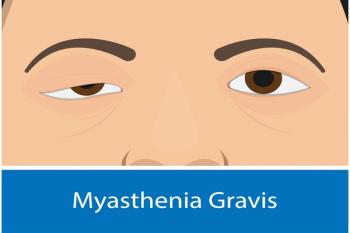
Mayo Clinic Report Suggests Changes to Next COPD GOLD Update
A Mayo Clinic team critiqued the 2018 update to the Global Initiative for Chronic Obstructive Lung Disease guidelines, recommending several changes to the next update.
A team of pulmonary clinicians and researchers from the Mayo Clinic recently critiqued the 2018 update to the
The 2018 guidelines are considered a minor update to the 2017 report, but the clinicians noted the burden of chronic obstructive pulmonary disease (COPD) worldwide and in the United States, where it is the third-leading cause of death.
The researchers highlighted several areas they would like to see emphasized in the next update:
Defining COPD through pulmonary function, not a fixed ratio
According to GOLD, the diagnosis of COPD requires 3 features:
- a postbronchodilator forced expiratory volume in 1 second (FEV1)/forced vital capacity (FVC) ratio of less than 0.70, to confirm persistent airflow limitation;
- symptoms such as dyspnea, chronic cough, sputum production, or wheezing, and
- “significant exposures to noxious stimuli,” such as a history of smoking cigarettes, or other environmental exposures, although GOLD does not quantify smoking history.
The 2018 update recommends repeat spirometry for patients with an initial FEV1/ FVC ratio in the 0.6 to 0.8 range to account for variability and to increase specificity.
The authors believe that a fixed ratio contributes to overdiagnosis of airflow obstruction in older patients and, to a lesser degree, underdiagnosis in younger patients, and they said that they wished the GOLD experts had decided to use a lower limit, as recommended by respiratory societies.
Simplifying treatment algorithms
The new guidelines have been simplified to rely mainly on “persistent” symptoms and exacerbation frequency to determine therapy specifics. The authors note that some patients have the ability to adapt their lifestyle to mask symptoms, and some people may only show symptoms once they begin to exercise, for example. Asymptomatic or intermittently symptomatic patients may be underdiagnosed, they cautioned.
Managing pharmacologics
Every visit needs to include education, training, and assessment. This is especially important to make sure patients understand the often complex medication delivery devices, they said. Some patients may have a challenge with certain devices because of orthopedic limitations, inspiratory muscle weakness, or incoordination, the authors noted.
Understanding comorbidities
Patients are more likely to die of COPD-related diseases rather than the disease itself, they said, citing lung cancer, cardiovascular disease, stroke, osteoporosis, anxiety and depression, sleep apnea, gastroesophageal reflux, diabetes, and bronchiectasis as among the most common. Many of these diseases are linked to tobacco use, they noted. These diseases must be treated according to their usual standards of care, they stressed, and treatment should not be withheld just because of the existence of COPD.
Including smoking and e-cigarette use
The authors would like the next update to include a stronger discussion of risks, benefits, and recommendations around e-cigarette use, citing its attractiveness to youth and other concerns. The current document only briefly touches on the issue of e-cigarettes, which are a
Asthma-COPD overlap syndrome
The 2017 GOLD update mentions
In addition, the report noted the continuing challenge—including an economic challenge—of treating recurrent or persistent exacerbations.
“As we move toward value-based, high-quality care, US hospitals with unacceptably
The authors recommended comprehensive pulmonary rehabilitation programs, including the use of motivational interviewing—based health coaching, to try to improve patients’ quality of life and reduce psychological distress.
“The majority of people with COPD have mild disease that requires very little treatment other than smoking cessation and possibly a short-acting bronchodilator,” Paul Scanlon, MD, a Mayo Clinic pulmonologist and the article’s senior author,
Reference
Mirz S, Clay RD, Koslow, MA, Scanlon PD. COPD guidelines: a review of the 2018 GOLD report. Mayo Clin Proc. 2018;93(10):1488-1502. doi: 10.1016/j.mayocp.2018.05.026
Newsletter
Stay ahead of policy, cost, and value—subscribe to AJMC for expert insights at the intersection of clinical care and health economics.













































